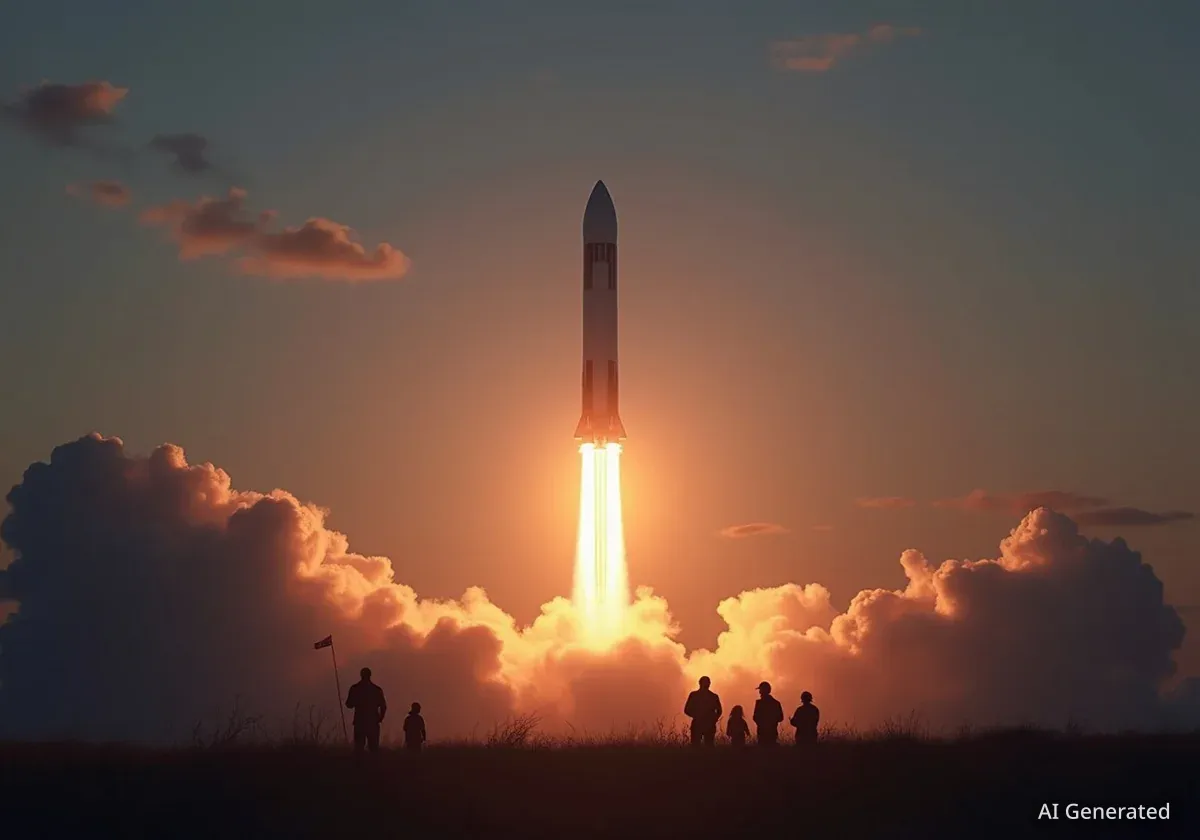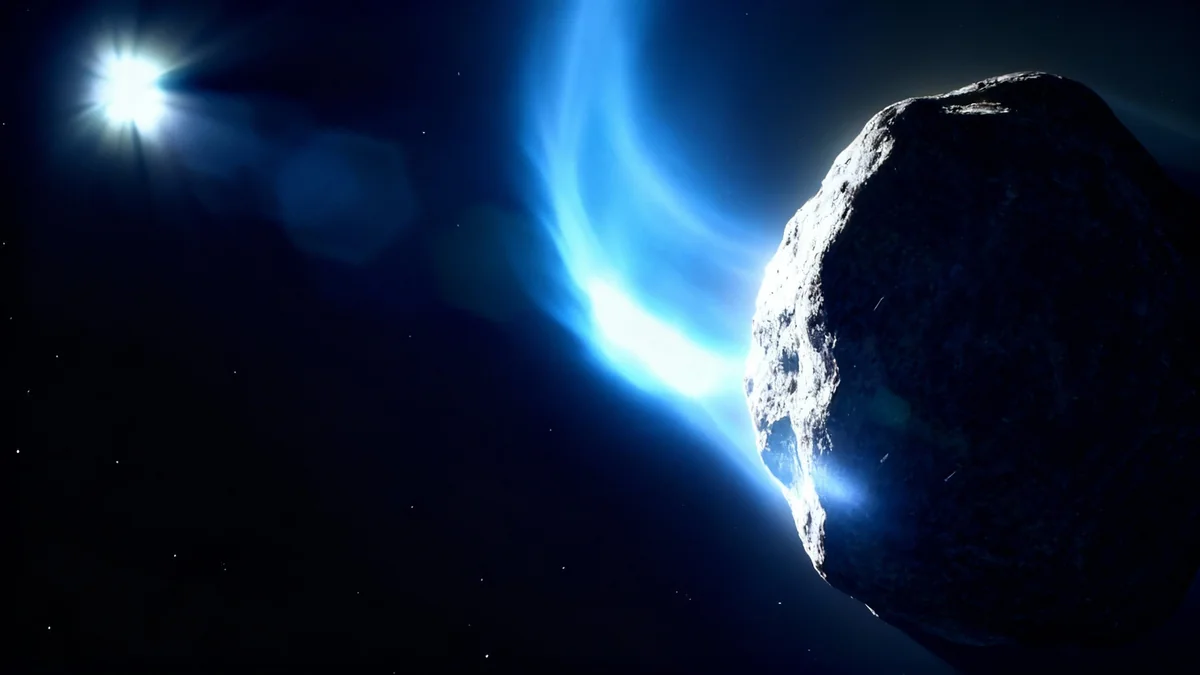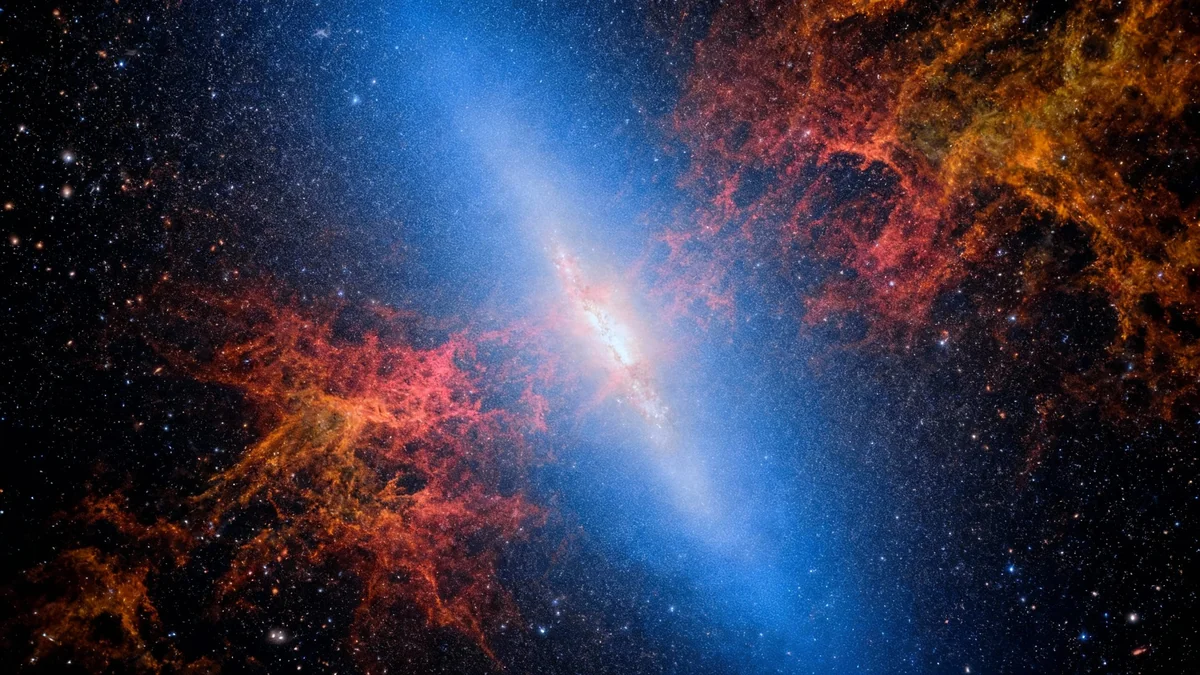China has successfully launched the Shenzhou-21 mission, sending a three-person crew to its Tiangong space station. The mission is notable for including the country's youngest astronaut to date, 32-year-old flight engineer Wu Fei, who is making his first journey into space.
The crew lifted off from the Jiuquan Satellite Launch Center in the Gobi Desert on Friday. They are scheduled to spend approximately six months in orbit, taking over operations from the departing Shenzhou-20 crew and conducting a series of scientific experiments and maintenance tasks.
Key Takeaways
- The Shenzhou-21 crew includes commander Zhang Lu, flight engineer Wu Fei, and payload specialist Zhang Hongzhang.
- At 32, Wu Fei is the youngest Chinese astronaut, or "taikonaut," to travel to space.
- The mission will carry out China's first in-orbit experiments on rodents, sending four mice to the station.
- This mission is a key part of China's long-term goal to land astronauts on the Moon by 2030.
A New Crew for Tiangong
The Shenzhou-21 spacecraft launched at 11:44 pm local time, with docking at the Tiangong space station expected to occur about three and a half hours later. The mission is commanded by veteran astronaut Zhang Lu, who is joined by first-time space travelers Wu Fei and Zhang Hongzhang, age 39.
During a press conference before the launch, the crew expressed their readiness for the mission. Wu Fei shared his excitement, stating he felt "incomparably lucky" to be part of the mission. Commander Zhang Lu conveyed a message of determination for his team.
"We will report back to our motherland and its people with complete success," Zhang Lu told reporters on Thursday.
The crew was given a formal send-off ceremony at the launch center, attended by family and colleagues, highlighting the national significance of the mission. This regular rotation of personnel is crucial for the continuous operation of the Tiangong station, which serves as the centerpiece of China's ambitious space program.
Science and Maintenance in Orbit
Beyond the crew rotation, the Shenzhou-21 mission has a packed schedule of scientific and operational objectives. A key task for the astronauts will be conducting spacewalks to perform maintenance and install new hardware on the exterior of the station.
One of the primary installations will be new anti-debris shields. These are designed to protect the Tiangong from the growing threat of space junk and micrometeoroids, ensuring the long-term safety and viability of the orbital outpost.
First Rodent Research in Space
A significant scientific component of this mission involves four mice—two male and two female. They are the subjects of China's first-ever in-orbit experiments on rodents, which will provide valuable data on how mammalian biology adapts to microgravity. This research is vital for understanding the long-term effects of space travel on living organisms.
The astronauts will also oversee a range of other experiments inside the station's laboratory modules. In addition to their scientific duties, the crew is tasked with conducting "popular science education" activities, aiming to inspire the next generation of scientists and engineers in China and internationally.
Stepping Stone to the Moon
The Tiangong space station is more than just an orbital laboratory; it is a critical platform for China's long-term space exploration goals. The experience gained from long-duration missions is directly applicable to the country's plan to send a crewed mission to the Moon by 2030 and eventually establish a permanent lunar base.
The China Manned Space Agency (CMSA) has outlined several "crucial upcoming tests" that will build toward this lunar objective. Missions like Shenzhou-21 are essential for testing life support systems, astronaut health protocols, and the technologies needed for interplanetary travel.
An Independent Path in Space
China has pursued its own space station program after being excluded from the International Space Station (ISS) project. A 2011 United States law banned NASA from collaborating with Beijing, effectively barring China from participating in the ISS. In response, China has invested billions of dollars into developing its own capabilities, making it only the third nation to independently put humans into orbit.
China's recent achievements underscore its rapid progress. These include:
- The Chang'e-4 probe's successful landing on the far side of the Moon in 2019, a historic first.
- The landing of a robotic rover on Mars in 2021.
As it solidifies its presence in low-Earth orbit, China is also actively seeking international partners for its future space endeavors. In February, it signed an agreement with Pakistan to recruit foreign astronauts, signaling its intent to build a coalition of spacefaring nations outside the framework of the ISS partnership.





